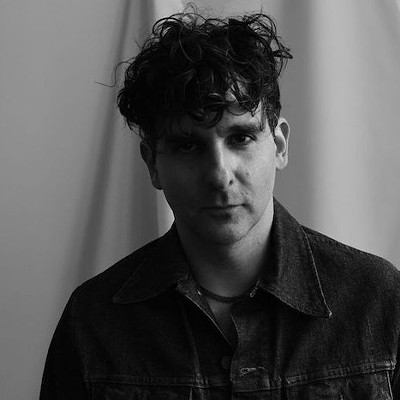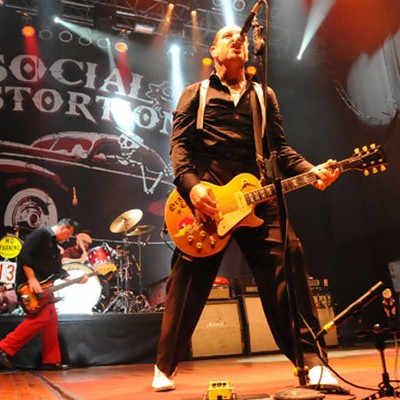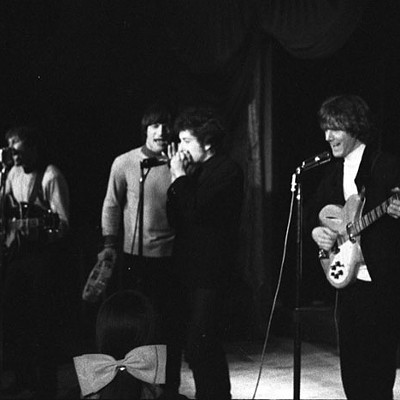If this weather's got you interested in curling up on the couch with a warm blanket and a good book, you're in luck. Sinecure Books has just put out a great one: photographer Peter Beste's Houston Rap, a years-in-the-making picture book detailing the locals and locales that have defined the city's hip-hop scene for more than two decades.
If you're envisioning a few dozen pages of gold grills and Cadillacs, go ahead and stop right there. This may be a coffee-table book, but it's no superficial treatment. Beste set out to create a historical document of a very specific time and place in the American experience. Since 2004, he's been snapping photos in the streets, clubs, studios and living rooms where H-town rap has been and continues to be a way of life, and he brought in writer Lance Scott Walker to help collect an authoritative oral history of the scene and its major participants dating back to its earliest days.
Scarface and Mike Jones are in there, sure, as are as plenty of guns, gold and drank. But you'll also find arresting images of boarded-up storefronts, after-hours strip joints, overgrown parking lots and the colorful people who populate such places. Houston Rap is the most intimate and detailed portrait yet of the faces, places and problems in Houston's oldest remaining black communities -- not to mention the bass-heavy soundtrack to daily life there.
So how did a couple of white dudes living and working in New York City come to spend nearly a decade diving so deeply into such a closed-off, localized world? Turns out they were hooked early, as music-obsessed kids growing up on the fringes of what was once considered just another anonymous 'burg in the great hip-hop wasteland between NYC and L.A.
"Growing up outside of Houston in the early '90s, I was really attracted or mystified by a lot of the early Rap-A-Lot artists, like the Geto Boys and Ganksta N-I-P, Point Blank and people like that," Beste says. "And then years later, I started photography at St. Edwards University in Austin, and they had a strong emphasis on documentary photography. And that's really what spoke to me in terms of photography; I guess my interest in Houston rap came back up in those years, and it just seemed like the perfect documentary project."
Beste began working on the book in 2004, beginning with pictures of H-town O.G.s K-Rino and Street Military. The more he shot, the more stories he heard. A rich narrative began to emerge of the evolution of Houston hip-hop, and that's when Beste gave Walker a call.
"Maybe six months in, he came to me and he said, 'Hey, this is more than just pictures. You need to come in, you need to write this, you need to interview people, you need to create a narrative,'" Walker says. "It was always going to be a book; that was always his idea. That was what we began to pursue early on: not really knowing, narrative-wise, exactly what direction it would take, but knowing there was a lot of story there."
Though they grew up on different sides of the city -- Beste on the area's northern edge and Walker down in Galveston -- their introduction to Houston rap came the same way as it did for most young people in the early '90s: through the Geto Boys.
"I was in 7th grade in 1991; I remember vividly," says Beste. "I was kicked out of the classroom for acting up; I can't remember what I did. There was another kid out there in the hallway; we were both acting up. And he took out the Geto Boys tape. This was in '91, the tape with the four mugshots on the front. He said, 'Hey, you gotta check this out.'"
"At the time, I was into N.W.A. and Eazy-E and other stuff, but here are guys from my own town doing this, and it seemed like the real deal," he continues. "I wasn't necessarily a hip-hop head; I listened to all kinds of music, mostly punk rock and hardcore at that time. But for some reason, was really attracted by these local artists who had a sound that was really original and were taking it to a whole new level."
For Walker, the story is much the same.
"I remember people in Galveston were listening to the Geto Boys in 1987-88, whenever the song 'Assassins' came out with that early lineup of the Ghetto Boys," he says. "That was the first thing that I remember hearing. I was listening to Kurtis Blow, UTFO and the Fat Boys and all that early stuff, but then I got into punk rock and kind of would just listen to rap here and there. So, my introduction to the deeper part of it really didn't come until Peter introduced me to the project and I started really looking into stuff."
Story continues on the next page.





